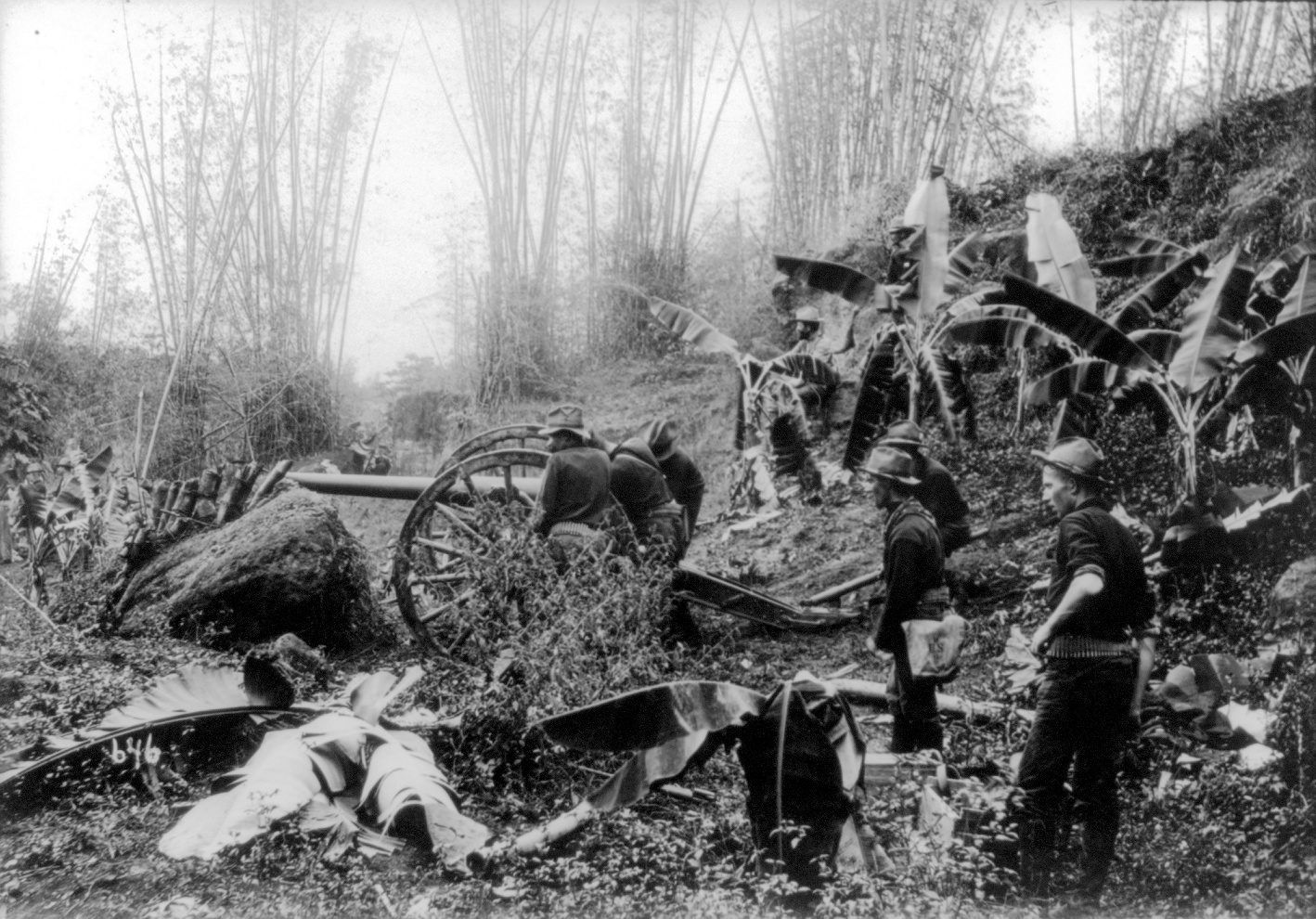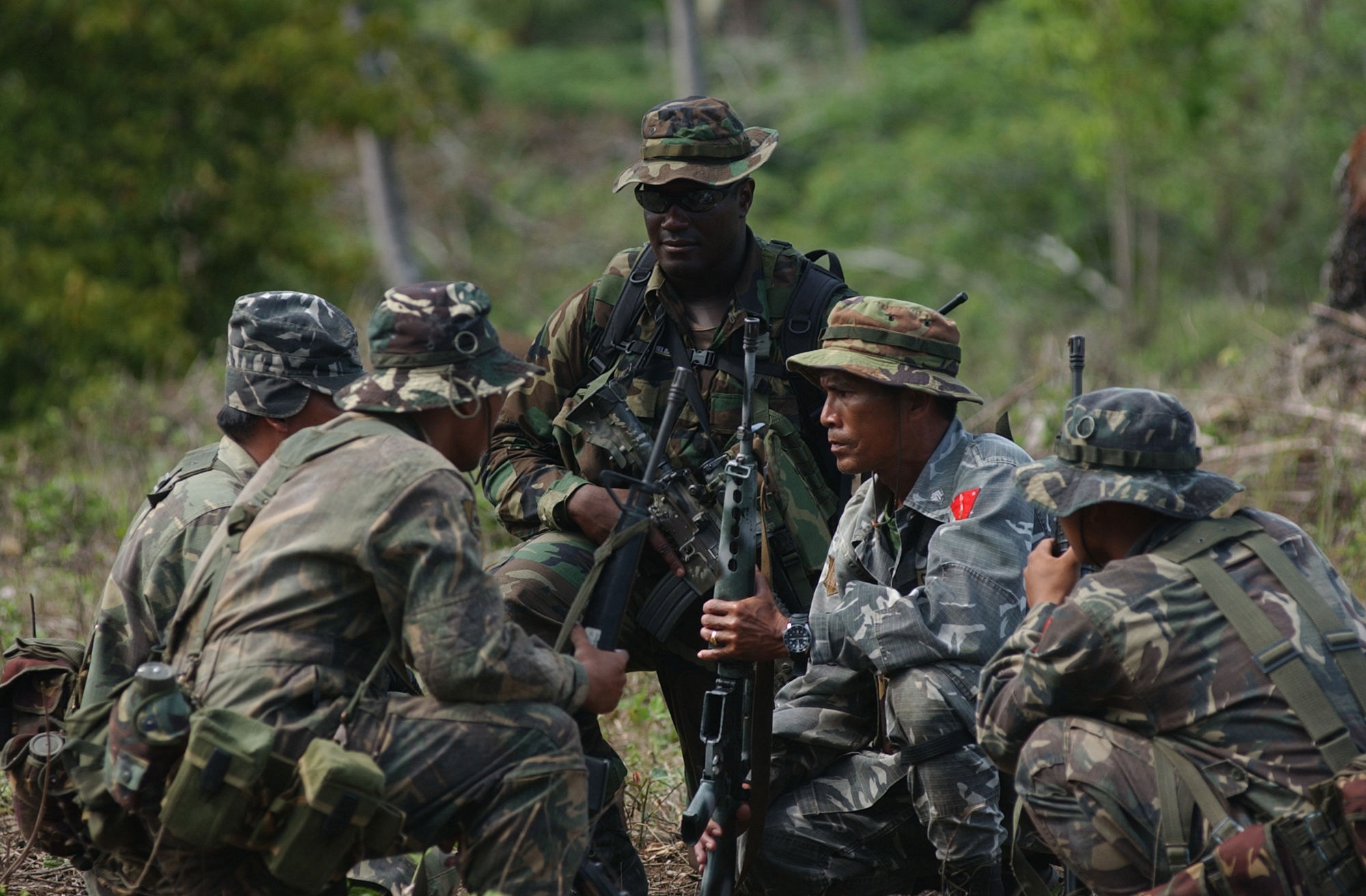|
1907 Philippine Assembly Elections
The first Philippine Assembly elections were held across the Philippines on July 30, 1907. The Philippine Organic Act of 1902 established a bicameral Philippine Legislature composed of the appointed Philippine Commission as the upper house and the elected Philippine Assembly as the lower house. The first national election for a legislative body in the Philippines, and considered to be a de facto independence referendum, the newly-formed Nacionalista Party, advocating independence, defeated the more established Progresista Party, which were conservative. Formation of political parties With the conclusion of the Philippine–American War (then known as the "Philippine Insurrection") and the establishment of the American colonial Insular Government under the Philippine Organic Act of 1902, elections were held in various parts of the Philippines. Divisions developed between the ''Federalistas'' who advocated for statehood within the United States, and the ''Independistas'' tho ... [...More Info...] [...Related Items...] OR: [Wikipedia] [Google] [Baidu] |
Philippine Assembly
The Philippine Assembly (sometimes called the Philippine National Assembly) was the lower house of the Philippine Legislature from 1907 to 1916, when it was renamed the House of Representatives of the Philippines. The Philippine Assembly was the first national legislative body fully chosen by elections. The Assembly was created by the 1902 Philippine Organic Act of the United States Congress, which established the Insular Government of the Philippines. Along with an upper house (the appointed Philippine Commission), it formed the bicameral Philippine Legislature during the American colonial period. In 1916, the Jones Act replaced the Philippine Organic Act and the Assembly became the current House of Representatives of the Philippines. The first Philippine Assembly elections were held on July 30, 1907. These were the first nationwide elections ever held in the Philippines. The Assembly was inaugurated on October 16, 1907 with Sergio Osmeña as Speaker of the Assembly, ... [...More Info...] [...Related Items...] OR: [Wikipedia] [Google] [Baidu] |
Philippine–American War
The Philippine–American War or Filipino–American War ( es, Guerra filipina-estadounidense, tl, Digmaang Pilipino–Amerikano), previously referred to as the Philippine Insurrection or the Tagalog Insurgency by the United States, was an armed conflict between the First Philippine Republic and the United States that started on February 4, 1899, and ended on July 2, 1902. The conflict arose in 1898 when the United States, rather than acknowledging the Philippines' Philippine Declaration of Independence, declaration of independence, annexed the Philippines under the Treaty of Paris (1898), Treaty of Paris at the conclusion of the Spanish–American War. The war can be seen as a continuation of the Philippine struggle for independence that began in 1896 with the Philippine Revolution against Spanish East Indies, Spanish rule. Fighting erupted between forces of the United States and those of the Philippine Republic on February 4, 1899, in what became known as the Battle of Manila ... [...More Info...] [...Related Items...] OR: [Wikipedia] [Google] [Baidu] |
Tarlac
Tarlac, officially the Province of Tarlac ( pam, Lalawigan ning Tarlac; pag, Luyag/Probinsia na Tarlac; ilo, Probinsia ti Tarlac; tgl, Lalawigan ng Tarlac; ), is a landlocked province in the Philippines located in the Central Luzon region. Its capital is the city of Tarlac. It is bounded on the north by the province of Pangasinan, Nueva Ecija on the east, Zambales on the west and Pampanga in the south. The province comprises three congressional districts and is subdivided into 17 municipalities and one city, Tarlac City, which is the provincial capital. The province is situated in the heartland of Luzon, in what is known as the Central Plain also spanning the neighbouring provinces of Pampanga, Pangasinan, Nueva Ecija and Bulacan. Tarlac covers a total land area of . Early in history, what came to be known as Valenzuela Ranch today was once a thickly-forested area, peopled by roving tribes of nomadic Aetas who are said to be the aboriginal settlers of the Philippines, and ... [...More Info...] [...Related Items...] OR: [Wikipedia] [Google] [Baidu] |
Manila Grand Opera House
The Manila Grand Opera House (Filipino: ''Marangal na Bahay-Opera ng Maynila'', abbreviated MGOH) was a theater and opera house located in the district of Santa Cruz in Manila on the intersection of Rizal Avenue and Doroteo Jose Street. It was the Philippines' premiere entertainment venue during the Spanish and American colonial periods and the most popular theater in the 1900s. It was also the site of historically significant political meetings. It could entertain crowds of more than 200 people. It hosted performances by musicians Katy de la Cruz, Bobby Gonzales, Diomedes Maturan, Sylvia La Torre, Pilita Corrales, Elizabeth Ramsey, Bayani Casimiro, the Reycards Duet, and comedy acts Bentot, Chiquito, Lupito, and Pugo and Tugo and Tugak. Plays directed by Lamberto Avellana and Wilfrido Ma. Guerrero were also performed here. First built in the mid-19th century as a circular wooden structure with a nipa roof known as the H.T. Hashim's National Cycle Track, the complex served ... [...More Info...] [...Related Items...] OR: [Wikipedia] [Google] [Baidu] |
Teodoro Sandiko
Teodoro Sandiko y Santa Ana (March 31, 1860 – October 19, 1939) was a Filipino lawyer and former senator of the Philippines. Sandiko played important roles in Philippine history when he held various posts in the Aguinaldo cabinet. After the revolution, he went through different positions in local government of Bulacan until he was elected to Philippine Senate in 1919. Sandiko was born in Pandacan, Manila on March 31, 1860 to Miguel Sandiko and María Paz de Santa Ana and was educated and finished Bachelor of Arts at the University of Santo Tomas. He also took two years of law but he didn't finish it, instead, he opened a Latin grammar school in Malolos. His radical nationalist ideas irritated the colonial Spanish officials so he sailed to Hong Kong and then to mainland Spain where he continued his law school at the University of Madrid. He was not able to finish his course because he joined the Propaganda Movement in Spain. He managed ''La Solidaridad'' on February 15, 1889. ... [...More Info...] [...Related Items...] OR: [Wikipedia] [Google] [Baidu] |
Fernando Guerrero (politician)
Fernando Guerrero may refer to: * Fernando Guerrero (Ecuadorian footballer) (born 1989), Ecuadorian footballer * Fernando Guerrero (boxer) (born 1986), Dominican Republic boxer * Fernando María Guerrero (1873–1929), Filipino politician, journalist, lawyer and polyglot * Fernando Guerrero (Spanish footballer) (born 2001), Spanish footballer {{hndis, Guerrero, Fernando ... [...More Info...] [...Related Items...] OR: [Wikipedia] [Google] [Baidu] |
Justo Lukban
Justo Lukbán y Rilles (May 28, 1863 – September 2, 1927) was a Filipino physician and politician. Lukban was elected to the Philippine Assembly and was mayor of the capital Manila from 1917 until 1920. Early life Justo Lukban was born in Labo, nowadays part of the Philippine province of Camarines Norte. He was the second child from a family of six children of Agustin Lukbán and Andrea Rilles. One of his three brothers was General Vicente Lukbán. He enrolled in 1873 at the Colegio de San Juan de Letran where he achieved a Bachelor of Arts-degree. Afterwards, Lukban studied medicine at the University of Santo Tomas. In 1888 he achieved his medical license and started his own practice in Manila. Philippine Revolution and Philippine-American War After the outbreak of the Philippine Revolution Lukban joined the revolutionary movement, just like his brother Vicente. He served as a medical officer. After the signing of the Pact of Biak-na-Bato on December 15, 1897, Lukban left ... [...More Info...] [...Related Items...] OR: [Wikipedia] [Google] [Baidu] |
Alberto Barretto
Alberto is the Romance version of the Latinized form (''Albertus'') of Germanic ''Albert''. It is used in Italian, Portuguese and Spanish. The diminutive forms are ''Albertito'' in Spain or ''Albertico'' in some parts of Latin America, Albertino in Italian as well as ''Tuco'' as a hypocorism. It derives from the name Adalberto which in turn derives from '' Athala'' (meaning noble) and ''Berth'' (meaning bright). People * Alberto Aguilar Leiva (born 1984), Spanish footballer * Alberto Airola (born 1970), Italian politician * Alberto Ascari (1918–1955), Italian racing driver * Alberto Baldonado (born 1993), Panamanian baseball player * Alberto Bello (1897–1963), Argentine actor * Alberto Beneduce (1877–1944), Italian scientist and economist * Alberto Bustani Adem (born 1954), Mexican engineer * Alberto Callaspo (born 1983,) baseball player * Alberto Campbell-Staines (born 1993), Australian athlete with an intellectual disability * Alberto Cavalcanti (1897–1982), Brazili ... [...More Info...] [...Related Items...] OR: [Wikipedia] [Google] [Baidu] |
James Francis Smith
James Francis Smith (January 28, 1859 – June 29, 1928) was an associate justice of the Supreme Court of the Philippines, Governor-General of the Philippines and an associate judge of the United States Court of Customs Appeals. Education and career Born on January 28, 1859, in San Francisco, California, Smith received a Bachelor of Science degree in 1877 from Santa Clara University and received a Bachelor of Arts degree and Master of Arts degree in 1878 from the same institution, then attended the University of California, Hastings College of the Law. He entered private practice in California from 1881 to 1898. He served in the United States Army from 1898 to 1901. He was the Collector of Customs for the Philippine Archipelago in Manila, Philippines from 1900 to 1901. He was an associate justice of the Supreme Court of the Philippines from 1901 to 1903. He was Secretary of Public Instruction for the United States Philippine Commission from 1903 to 1906. He was Vice Governor of ... [...More Info...] [...Related Items...] OR: [Wikipedia] [Google] [Baidu] |
Rafael Palma
Rafael Palma y Velásquez (: October 24, 1874 May 24, 1939) was a Filipino politician, Rizalian, writer, educator and a famous Freemason. He was a senator from 1916 to 1921 and was the fourth president of the University of the Philippines. Biography Palma was born in Manila on October 24, 1874 to ''Don'' Hermógenes Palma, a clerk at the ''Intendencia'' Office, and Hilaria Velásquez. His younger brother was the soldier-poet José Palma, the author of the Spanish poem ''Filipinas'', which is, along with its subsequent translations, used in the Philippine National Anthem. In 1885, he began his studies at the Ateneo de Manila and graduated with a Bachelor of Arts degree. In 1892, he began his law studies at the University of Santo Tomas. While enrolled in the university, he was employed in the Office of the Bureau of Lands. He was also a reporter in ''La Independencia'', the first Filipino daily newspaper, founded and directed by Antonio Luna. When Luna died in 1899, Palma assum ... [...More Info...] [...Related Items...] OR: [Wikipedia] [Google] [Baidu] |
Juan Sumulong
Juan Marquez Sumulong Sr. (born Juan Sumulong y Marquez; December 27, 1875 – January 9, 1942) was a Filipino former revolutionary, journalist, lawyer, educator and politician from the province of Rizal. He was the president of the opposition party which ran against Manuel L. Quezon's Nacionalista Party in the 1941 presidential election of the Philippine Commonwealth. He is also the maternal great-grandfather of former President Benigno Aquino III. Early life Juan Marquez Sumulong was the brains of the opposition during the ascendancy of Manuel L. Quezon. He was born in Antipolo, Distrito de Morong (now part of Rizal province) on December 27, 1875 to Policarpio Sumulong, a tenant farmer who became a ''Capitan municipal'' (mayor) of Antipolo, and Arcadia Marquez. Education After finishing his primary education in his hometown, he went to Manila and studied at the Colegio de San Juan de Letran. To attend school, he had to walk each day from his residence in Tondo to his sch ... [...More Info...] [...Related Items...] OR: [Wikipedia] [Google] [Baidu] |




.jpeg)
